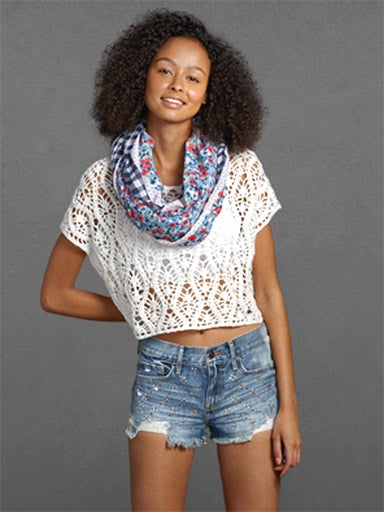Not available in XL: Abercrombie & Fitch CEO Mike Jeffries accused of only wanting 'thin and beautiful people'
Company's aggressive pursuit of the preppy, highly-sexed 18- to 22-year-old demographic is largely down to its 68-year-old CEO

Abercrombie & Fitch, the controversial US clothing retailer, has been accused of deliberately excluding plus-size women from wearing its clothes, by failing to make or sell womenswear in any size above Large. The latest claims of body elitism come from Robin Lewis, a retail industry analyst and co-author of The New Rules of Retail, who says Abercrombie CEO Mike Jeffries “doesn't want larger people shopping in his store, he wants thin and beautiful people.”
In an interview with Business Insider, Lewis suggested Jeffries “doesn't want his core customers to see people who aren't as hot as them wearing his clothing. People who wear his clothing should feel like they're one of the 'cool kids.'” The chain, which has more than 300 outlets in the US, sells men's clothes in XL and XXL sizes, but these are designed solely to fit the muscle bulk of strapping sportsmen, says Lewis. “Abercrombie is only interested in people with washboard stomachs who look like they're about to jump on a surfboard.”.
A&F's aggressive pursuit of the preppy, highly-sexed 18- to 22-year-old demographic is largely down to its 68-year-old CEO, who explained his strategy to Salon in 2006. “That's why we hire good-looking people in our stores,” Jeffries said. “Because good-looking people attract other good-looking people, and we want to market to cool, good-looking people. We don't market to anyone other than that.” He went on: “In every school there are the cool and popular kids, and then there are the not-so-cool kids. Candidly, we go after the cool kids. We go after the attractive all-American kid with a great attitude and a lot of friends. A lot of people don't belong [in our clothes], and they can't belong. Are we exclusionary? Absolutely.”
The company, infamous for its semi-naked sales assistants, has come under fire previously for its emphasis on appearance. In 2004 A&F settled a $40m (£26m) class-action discrimination lawsuit in the US, after accusations that it filled its shop floors with almost exclusively white staff. Five years later, Riam Dean, a British student born without a left forearm, won £9,000 from the firm after she was forced to work in a stock-room, where she wouldn't be seen by customers. Last year, a leaked company email revealed that employees at the chain's Milan store were made to perform military-style exercises, such as push-ups and squats, in order to maintain their toned physiques.
Yet Abercrombie's policy of excluding overweight customers may turn out to be not only bad publicity, but also bad business. Recent estimates suggest that around two-thirds of America's clothes-buying population now fall into the plus-size category, generally deemed to be US size 14 and above. There are no women's trousers larger than a 10 on offer at A&F, whose size chart runs only from Extra Small to Large. By contrast, its leading competitors H&M and American Eagle offer up to sizes 16 and 18 respectively. H&M recently hired plus-size model Jennie Runk as the face - and body - of its latest beachwear collection.
Join our commenting forum
Join thought-provoking conversations, follow other Independent readers and see their replies
Comments